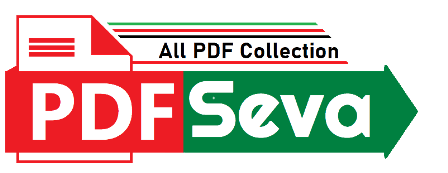
ad here
263 Download
5 months ago
We Have An Understanding Of Inheritance Patterns From The Work Of Mendel And His Successors. But Exactly What Those “Factors” Were That Determine Phenotype Was Not So Clear. Knowing The Structure Of Genetic Material And The Structural Basis Of Genotype And Phenotype Conversion Became Known, The Focus Of Attention In Biology For The Next Century, Since These “Factors” Reflect The Genetic Basis Of Inheritance.
With These Contributions From Watson, Crick, Nirenberg, Khorana, Kornbergs (Father And Son), Benzer, Monod, Brenner, And The List Continues, Grew The Whole Science Of Molecular Biology. A Contemporaneous Question Being Addressed Was The Mechanism Of Evolution.
Our Understanding Of The Molecular Basis Of Evolution Has Been Enriched By Progress In Molecular Genetics, Structural Biology And Bio-informatics. This Unit Has Covered And Elucidated The Story Of Evolution And Theory, The Structure, And Function Of Dna.
Ever Thought Why An Elephant Gives Birth To Another Elephant And Not Some Other Animal? Or Why From The Seed Of Mango, Only A Mango Plant Grows And Not Any Other Type Of Plant? If Yes, Then Are The Children The Same As Their Parents? Or Do Some Of Their Characteristics Give Away Hints Of Differences Between Them?
Wondered Why Siblings Look So Alike Sometimes? Or Sometimes Even So Dissimilar? Science Takes These And Other Related Concerns Into The Realm Of Genetics, A Subcategory Of Biology. This Subject Deals With The Transmission Of Characteristics From Parents To Offspring Known As Heredity. Heredity Is Grounded On Inheritance, Meaning The Passing Of Qualities From Parent To Offspring.
The Extent To Which Offspring Differ From Parents Is Referred To As Variation. Man, As Early As 8000–1000 B.c., Knew That Sexual Reproduction Was One Of The Hidden Sources Of Variation. They Exploited The Variations Naturally Occurring In The Wild Populations Of Plants And Animals To Breed And Select For Organisms That Have Desired Characteristics.
For Example, The Well-known Indian Breeds Like The Sahiwal Cows Of Punjab Were Bred From Ancient Wild Cows By Artificial Selection. However, We Have To Admit That Even Though Inheritance Of Characters And Variations Was Well-known To Our Ancestors, The Scientific Basis Of These Phenomena Was Largely Unknown To Them.
Scientific Knowledge Of Inheritance Began To Evolve In The Mid-1800s. Gregor Mendel Worked Out The Laws Of Heredity In Living Organisms Based On Seven Years Of Hybridization Experiments With Garden Peas During 1856–1863. Mendel’s Work On Inheritances Was The Very First Application Of Mathematical Reasoning And Statistical Analysis In Solving Biological Problems.
As Mendel’s Trials Were Conducted On A Large Scale, Data Obtained From His Experiment Were More Reliable. In Addition, Checking His Conclusions By Researching Several Progressively Newer Generations Of His Test Plants Has Proved That Universal Principles Of Inheritance Were Represented, Not Wild Speculation On His Part.
Mendel Conducted His Study Regarding Characteristics Of The Garden Pea Plant, In Such Things As Tall Or Dwarf Plants And Yellow Or Green Seeds, Which Showed Two Opposing Qualities. Thus, He Could Establish A Basic Framework Of Laws Controlling Heredity That Was Later Expounded Upon By Scientists To Account For The Complexity Of All Of The Many Natural Observations.
Mendel Did His Artificial Pollination/cross-pollination Work With Many True-breeding Pea Lines. A Truebreeding Line Is A Strain That, Once It Has Been Self-pollinated For Several Generations, Will Reliably Produce Plants That All Have Nearly Identical Characteristics And Therefore Breed True For Those Characteristics.
Mendel Chose For His Experiments Fourteen Different True-breeding Pea Plant Varieties That Formed Pairs With Similar Characteristics Except In One Of Several Particular Features. Among The Contrasting Features Were Smooth Versus Wrinkled Seeds, Yellow Versus Green Seeds, Full (Expanded) Versus Constricted Green Or Yellow Pods, Tall Versus Dwarf Plants, And So On (Figure 4.1, Table 4.1).
To Understand The Pattern Of Inheritance Of A Single Gene More Clearly, Read About This Example, Which Is A Part Of Mendel’s Pea Plant Hybridization Experiment (Figure 4.2) Where He Experimented With Tall And Dwarf Pea Plants.
In Order To Obtain Plants For The First Hybrid Generation, Mendel Gathered The Seeds Formed From This Cross-pollination And Planted Them. These Plants Are The F1 Or Filial1 Progeny.
Mendel Observed That All Of The F1 Offspring Plants Were Tall, None Were Dwarf; They Were Like One Of The Parents Not An Intermediate Of Both Parents Figure 4.3. He Repeated This Experiment For Each Of The Other Sets Of Characteristics And Again He Found The Same Thing: The Characteristics Of One, But Not Both Parents Is What He Saw For Each Of The F1.
That Is, After Mendel Self-pollinated The Tall F1 Plants, He Was Surprised That Some Of The Progeny In The Filial2 Generation Were “Dwarf,” Expressing The Trait That Had Not Expressed In The F1 Generation.
An Examination Of The F2 Plants Revealed That One-quarter Of The F2 Plants Were Dwarf While Three-quarters Of Them Were Tall. All Of The Kids, None Of Them Were Of Middle Height; They Were Either Tall Or Dwarf. They Were The Same As Their Parents – Tall And Dwarf – And Did Not Mixarse 4.3. With Respect To The Other Characteristics That He Examined, Similar Results Were Seen:
While In The F1 Generation, Only One Of The Parental Qualities Appeared, In The F2 Stage, Both Traits Showed Up In 3:1 Ratio. No Manifestation Of Blending Of The Two Contrasted Features Seemed Either In The F1 Or In The F2 Stage.
From These Experiments, Mendel Concluded That There Must Be Something Passed From Parent To Offspring Via Gametes In A Pure Form Throughout Generations. Of Course, He Called Them “Factors.” We Know Them As Genes. So, The Units Of Heredity Are Genes. They Are Units Carrying The Information Necessary To Make An Organism Express A Given Trait. Genes That Code For Two Different But Related Characteristics Are Called Alleles; They Are Simply Different Forms Of The Same Gene.
One Uses The Capital Letter For The Expressed Character At F1 Level And Small Alphabet For The Other Character, If One Uses Alphabetical Symbols For Each Gene. For Example, T And T Are Alleles Of Each Other And Are Used To Represent The Tall Trait And The “Dwarf” Trait, Respectively, For The Height Character. Thus, In Plants, Tt, Tt, Or Tt Would Be The Pair Of Alleles Determining Height.
Mendel Also Assumed That This Homozygous Allelic Pairs Tt And Tt, Which Determine Height, Are Identical In A True Breeding Tall Or Dwarf Pea Variety. Tall And Dwarf Describe The Phenotypic Of The Plant While Tt And Tt The Genotype. Given A Plant Has Genotype, Tt, What Would Its Phenotypic Be?
Mendel Assumed That From A Pair Of Different Factors, One Factor Is Dominant Over The Other, Just Like What Happened In The Case Of The F1, And Is Therefore Dubbed The Dominant Factor While The Other Component Is A Recessive Factor. He Did This On Grounds That The Phenotype Of F1 Heterozygote Tt Is Exactly Similar To That Of The Tt Parent In Morphology.
In This Case, Then, The T For Tallness Is Dominant, While The T For Dwarfism Is Recessive. The Same Pattern Held For Every Other Set Of Characters Or Traits That He Studied. Using The Capital And Lower Case Of An Alphabetical Symbol Makes It Very Easy (And Memorable) To Keep Track Of This Idea Of Recessiveness And Dominance.
You’ll Get Mixed Up With The Vocabulary If T And D Are Alleles Of The Same Gene/character, So Don’t Use T To Stand For Tall And D To Stand For Dwarf. Just As With The Homozygotes Tt And Tt Alleles Can Be Identical Or Different As With The Heterozygote Tt. Consider.
| PDF Name: | Principles Of Inheritance And Variation NCERT |
| Author : | Live Pdf |
| File Size : | 3 MB |
| PDF View : | 24 Total |
| Downloads : | 📥 Free Downloads |
| Details : | Free PDF for Best High Quality Principles Of Inheritance And Variation NCERT to Personalize Your Phone. |
| File Info: | This Page PDF Free Download, View, Read Online And Download / Print This File File At PDFSeva.com |
Copyright/DMCA: We DO NOT own any copyrights of this PDF File. This Principles Of Inheritance And Variation NCERT PDF Free Download was either uploaded by our users @Live Pdf or it must be readily available on various places on public domains and in fair use format. as FREE download. Use For education proposal. If you want this Principles Of Inheritance And Variation NCERT to be removed or if it is copyright infringement, do drop us an email at [email protected] and this will be taken down within 24 hours!
© PDFSeva.com : Official PDF Site : All rights reserved
